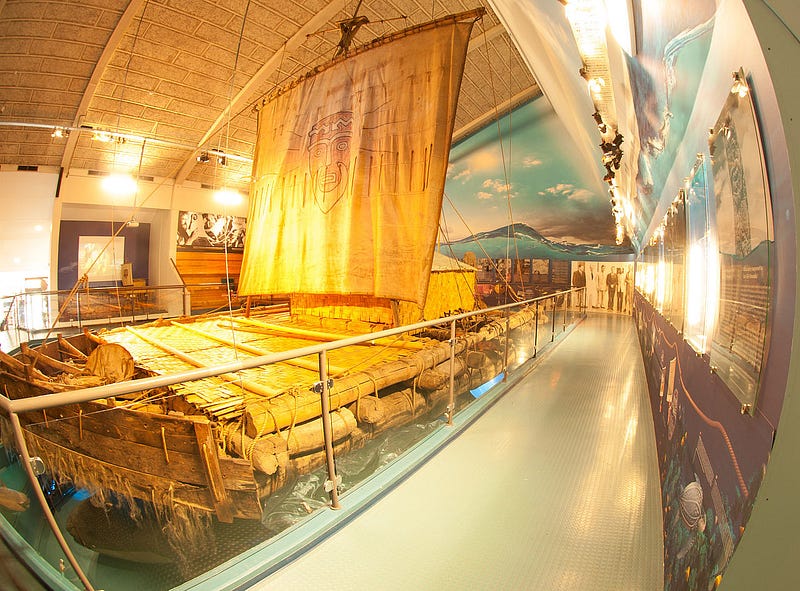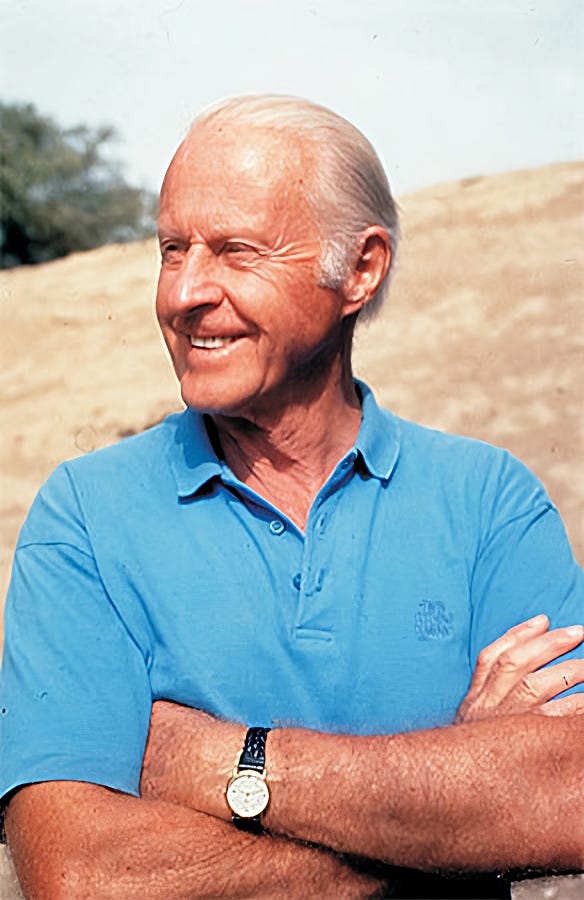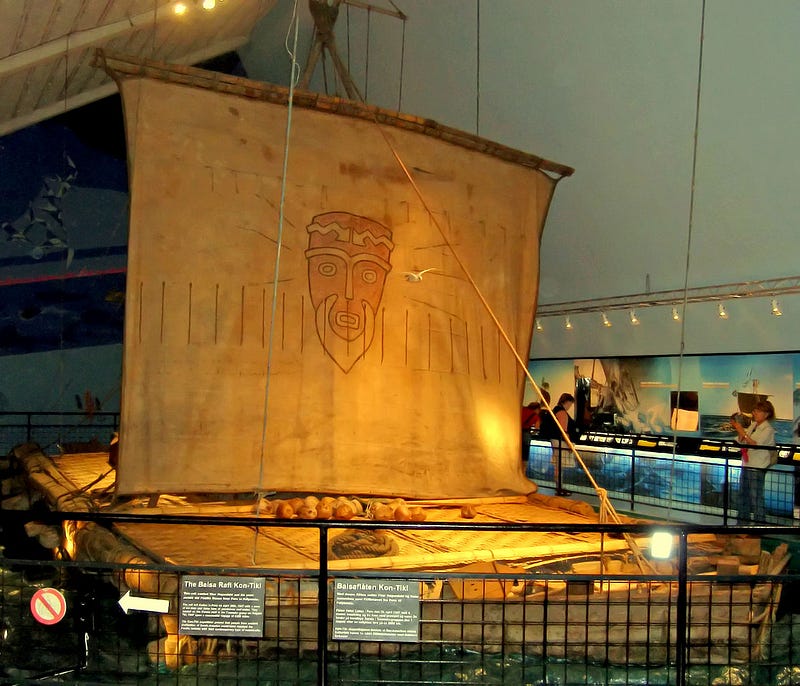# The Remarkable Journey of the Kon-Tiki Expedition
Written on
Chapter 1: The Kon-Tiki Expedition
On April 28, 1947, the legendary Kon-Tiki expedition embarked on its journey. Norwegian adventurer Thor Heyerdahl sought to traverse the Pacific Ocean from Peru to the islands of Polynesia, aiming to demonstrate that the Polynesian people might have originated from South America rather than Asia, as was commonly believed at the time.

The raft was constructed using materials that were available in Peru before 1492, including balsa wood, hemp, bamboo, and banana leaves. Notably, no nails, screws, or wires were utilized in its assembly. Heyerdahl named the raft Kon-Tiki to honor the sun god. The hull was crafted from nine sturdy balsa trunks, the longest measuring 14 meters. In its dry form, this wood is lighter than cork, allowing the raft to float. The structure was tied together with hemp ropes, while the deck, measuring 9 by 4.5 meters, was covered with bamboo and braiding. A single sail measuring 4.6 by 5.5 meters, adorned with a painted image of Kon-Tiki, propelled the raft forward.
Food supplies, primarily canned goods, were secured in cardboard boxes that were treated with hot asphalt and sand to prevent them from sticking. Drinking water was stored in bamboo pipes sealed with resin. Additional provisions such as food rations, sleeping bags, and everyday items were supplied by the U.S. Ministry of War.

Assembling the Crew
Heyerdahl reached out to a dozen individuals with an enticing offer: “I can’t promise anything except a free trip to Peru, the Pacific islands, and back, but you’ll definitely need your technical skills. Please respond quickly.” This call led him to select five complete strangers—four Norwegians and one Swede—who were all courageous young men involved in the anti-German underground. Remarkably, only one had sailing experience, and Thor himself was unable to swim due to a lifelong fear of water stemming from a near-drowning incident at age five.
Many skeptics doubted the raft would survive more than a few days at sea. Experts speculated that the logs would splinter, the ropes would fray, and the raft would succumb to water, ultimately leading to the crew's demise.
The Adventure Begins
The raft departed from Callao, Peru. Its compact size allowed it to ride the waves rather than be overwhelmed by them. Water that splashed aboard easily drained between the logs. Crew members shared fond memories of the voyage, including mornings spent gathering flying fish that had landed on deck during the night. They described the fish as tasting similar to trout, and noted that their water reserves exceeded their needs throughout the trip. They even supplemented their diet with fresh fish and occasionally mixed seawater with drinking water for added salt.

However, according to Heyerdahl, there were many tumultuous days when seven-meter waves threatened the raft’s stability. The post-war world was captivated by the expedition, often described as an "impossible mission." Newspapers around the globe followed their progress as though they were embarking on a lunar expedition. “Kon-Tiki’s journey was the world’s first reality show,” remarked Joachim Rønning, a Norwegian filmmaker who later directed a film about the expedition.
After 101 days and covering a distance of 6,700 kilometers at an average speed of 2.5 km/hr, the Kon-Tiki ran aground on a reef at Raroia Atoll near Tahiti.
Thor Heyerdahl passed away on April 18, 2002, in Colla Micheri, Italy, at the age of 87. A decade later, a film titled "The Kon-Tiki Expedition," directed by Joachim Rønning and Espen Sandberg, brought this incredible story to the big screen. The film, featuring Pål Sverre Hagen as Heyerdahl, received nominations for both an Oscar and a Golden Globe.
Chapter 2: Exploring the Legacy of the Kon-Tiki Expedition
The first video highlights the incredible journey of Thor Heyerdahl as he crossed the Pacific Ocean on a wooden raft, despite his inability to swim.
The second video, "Kon Tiki Expedition | What Really Happened | Ep. 14," delves deeper into the events and challenges faced during the expedition.
Why Do Dogs Wag Their Tails?
In a surprising twist, scientists have recently revealed that the primary reason for tail wagging in dogs might be more straightforward than previously thought. Contrary to popular belief, the tail does not dictate the dog's behavior.
Did you enjoy this article? If so, please leave a comment, share your thoughts, or consider providing a tip to support my writing. Your encouragement motivates me to continue creating engaging content. Feel free to follow me for daily updates! Thank you!